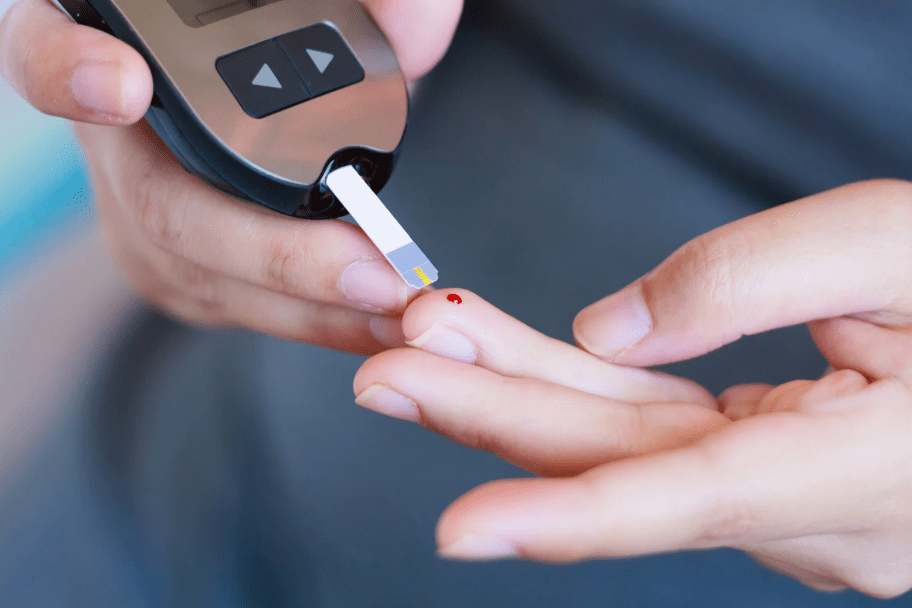Table Of Contents
Eating Disorders
According to the National Eating Disorders Association, “A survey of 3,000 women in the military found that over 60% of respondents had an eating disorder, an in the Marine Corps alone, 97.5% met the criteria for an eating disorder”. Other studies have shown that approximately 30% of women in the military suffer from an eating disorder. Eating disorders affect both men and women in all branches of the military, however a study shows that female soldiers are six time more likely to be diagnosed with an eating disorder.
What are Eating Disorders?
Eating disorders are conditions related to persistent eating behaviors that negatively impact health, emotions, and ability to function. The most common eating disorders are anorexia nervosa, bulimia nervosa, and binge eating disorder. Most eating disorders involve obsessive focus on weight, body shape, and food. This leads to dangerous eating behaviors which can impact the body’s ability to get appropriate nutrition and harm organs.
Anorexia Nervosa
Anorexia Nervosa is a potentially life-threatening eating disorder that is characterized by an abnormally low body weight, intense fear of gaining weight and a distorted perception of weight or shape. The disorder is diagnosed when a person weighs at least 15% less than their ideal body weight. People with anorexia have intense fears of becoming fat and see themselves as fat even when they are very thin. These individuals may try to correct this perceived “flaw” by strictly limiting food intake, exercising excessively in order to lose weight, and using laxatives or diet aids.
Bulimia Nervosa
Bulimia nervosa is a psychological eating disorder that is characterized by episodes of binge eating and purging. During an episode, people typically eat a large amount of food in a short period of time and then try to rid themselves of extra calories in an unhealthy way. These episodes are accompanied by no sense of control over eating behavior and followed by inappropriate methods for trying to lose weight, such as vomiting, fasting, enemas, excessive use of laxatives and diuretics, or compulsive exercising. Individuals with bulimia may be at a normal weight but can still experience serious health complications.
Binge Eating Disorder
Individuals with binge eating disorder regularly eat too much food and experience a lack of control over their eating. Binging may occur even when the person is not hungry and may continue after they are uncomfortably full. After a binge, people may feel guilty, disgusted, or ashamed by their behavior and amount of food eaten. Unlike bulimia, people with binge eating disorder do not try to compensate for their binging with purging. The binging typically occurs at least once a week.
Prevalence of Eating Disorders in Veterans
According to a June 2018 study, eating disorder diagnoses amount military personnel are up 26 percent over a five-year period. Research also suggests that the actual incidence of such disorders is even higher given that individuals with eating disorders typically do not seek medical care.
More women than men were diagnosed with an eating disorder in all branches of the military. More than two-thirds of cases involved female troops and the overall incidence rate among women was 11 times higher than men. Of those cases, bulimia accounted for almost 42 percent of diagnoses while anorexia only accounted for less than one-eight. More than 46 percent were classified as “other” or “unidentified disorders” (e.g. binge eating).
Overall, military service could increase the risk of developing an eating disorder due to potential exposure to trauma and the need to meet physical fitness and weight requirements.
How to Get Service Connection for Eating Disorders
To establish direct service connection for an eating disorder, veterans must show three elements: (1) a current diagnosis of an eating disorder; (2) and in-service event, injury, or illness; and (3) a medical nexus linking the current, diagnosed eating disorder to the in-service event.
Eating Disorders and PTSD: Secondary Service Connection
In 2017 the VA funded a study that looked a female veterans of war which stated that depression and PTSD can trigger disordered eating. The onset of PTSD symptoms can induce negative thinking and cause individuals to engage in disordered eating in an effort to manage the PTSD symptoms. Purging can be used as a way to get rid of unwanted feelings and thoughts while binging can be used as a way to fill a void within oneself.
If veterans are service-connected for PTSD and are later diagnosed with an eating disorder, they may qualify for secondary service connection. A secondary service-connected condition is one that is caused or aggravated by a primary service-connected condition. Veterans must show that their secondary condition is related to their already service-connected condition in order to receive a VA disability rating.
How are Eating Disorders Rated?
Only eating disorders with extreme weight loss can be rated. All eating disorders are rated on the same system.
An important part of rating eating disorders is the percentage of minimum weight. The minimum weight is the absolute least that someone that height should weigh. This is not the normal expected weight, but the absolute minimum. The ratings are based on the percent of the minimum weight. The following chart notes the height, absolute minimum weight, and various percentages that are important for rating. The same chart is used for both men and women.
| Height | Minimum Weight | 85% of Minimum Weight | 80% of Minimum Weight |
| 4’10 | 91 | 77 | 73 |
| 4’11 | 94 | 80 | 75 |
| 5 | 97 | 82 | 78 |
| 5’1 | 100 | 85 | 80 |
| 5’2 | 104 | 88 | 83 |
| 5’3 | 107 | 91 | 86 |
| 5’4 | 110 | 94 | 88 |
| 5’5 | 114 | 97 | 91 |
| 5’6 | 117 | 99 | 94 |
| 5’7 | 121 | 103 | 97 |
| 5’8 | 125 | 106 | 100 |
| 5’9 | 128 | 109 | 102 |
| 5’10 | 132 | 112 | 106 |
| 5’11 | 136 | 116 | 109 |
| 6’ | 140 | 119 | 112 |
| 6’1 | 144 | 122 | 115 |
| 6’2 | 148 | 126 | 118 |
| 6’3 | 152 | 129 | 122 |
| 6’4 | 156 | 133 | 125 |
| 6’6 | 164 | 139 | 131 |
| 6’7 | 168 | 143 | 134 |
| 6’8 | 173 | 147 | 138 |
The Ratings:
| Ratings | Symptoms |
| 100% | If the veteran’s weight is less than 80% and there were incapacitating episodes adding up to 6 weeks or more a year, and the condition required hospitalization for nutrition or tube feeding 3 or more times a year |
| 60% | If the veteran’s weight is less than 85% of the minimum and there were incapacitating episodes adding up to 6 weeks or more a year |
| 30% | If the veteran’s weight is less than 85% of the minimum, and there were incapacitating episodes adding up to between 2 and 6 weeks a year |
| 10% | If an eating disorder is diagnosed, there were incapacitating episodes adding up to 2 weeks or less a year, and there is binge eating with vomiting or other ways to prevent weight gain, or they are resistant to gaining weight even if they are below minimum weight |
| 0% | If there are no incapacitating episodes |
Veterans Help Group have been supporting veterans in getting the benefits they deserve since 1995. If you or a loved one served, and suffer from an eating disorder, we are here to help. Call Veterans Help Group at 855-855-8992 or complete our free veterans benefits case evaluation form.

Qualifying for VA Disability Benefits for Anxiety
Qualifying for VA Disability Benefits for Anxiety Generalized anxiety disorder and other anxiety...

Increasing Your VA Disability Rating from 90% to 100%
Increasing Your VA Disability Rating from 90% to 100% A 90% disability rating sounds good. In...

Community Care Changes: What Veterans Need to Know in 2025
Community Care Changes: What Veterans Need to Know in 2025 Written by Schuyler Swanton, Associate...





